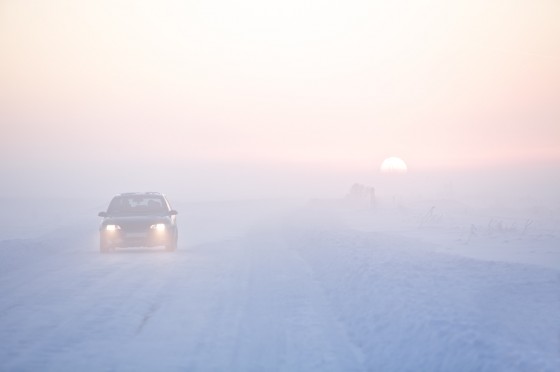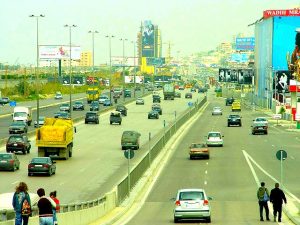 Got the Foggiest Notion How to Drive in Desert Fog?
Got the Foggiest Notion How to Drive in Desert Fog?
Camel caravans and soaring sand dunes demand backdrops of sun-bleached skies (or star-strewn heavens). But what happens when the fog rolls in? Dense fog is a key feature of a desert environment, a natural result of rapid temperature swings. Topography also plays a role in fog formation, as moist cool air condenses it forms fog banks at ground level. It’s not just London and San Francisco that get the misty treatment, many Middle East locations can best Washington D.C. for the Foggy Bottom title.
Southwest monsoons cloak the east coast of Yemen in thick fog from June to September. Along the southern coast of the Arabian Peninsula, an area of scant precipitation, fog brings the moisture necessary to sustain both flora and wildlife.
On Oman’s Jiddat al Harasis, when prevailing winds come off the Indian Ocean, the sea breeze causes a rapid drop in air temperature while increasing relative humidity. This means fog, a critical moisturizer for this area where annual rainfall averages less than 50 millimeters (fog precipitation along the Dhofar coast is among the highest in the world).
Descend from the hills of Amman to the outlying Jordan desert on any cool morning and be slapped in the face with a misty wall that cuts vision and halts traffic. Visibility deteriorates in a matter of seconds. In a region where vehicle maintenance is inconsistent and driving skills questionable in the best weather conditions, do you have the right stuff to navigate fog?
Modern cars and trucks are equipped with fog lights, but, as with window defrosters, most desert drivers haven’t a clue how to operate these tools. Pull out the owner’s manual and get to know your driving machine. Familiarize yourself with your front and rear fog lights, learn how to switch them on and off.
Then, to help you safely steer through the most treacherous fog conditions, check out these tips:
- Turn off the radio and put away the phone: look and listen for any hazards that may be ahead.
- Slow down gradually and drive at a speed that suits conditions. The key word is slow.
- Increase the distance between you and other vehicles. You’ll need extra distance to brake safely.
- Remain calm. Be patient. Don’t pass other vehicles or suddenly change speed.
- Use your low beam headlights. (High beams bounce off fog, dazzling the driver and making it harder to see.)
- If you have fog lights on your vehicle, use them too.
- Use pavement markings to guide you: let the right edge of the road set your position, avoid the centerline.
- Keep your windows and mirrors clean. Use your defroster and wipers to maximize your vision.
- Beware of other drivers not using headlights. There will be many!
- At a junction with limited visibility, stop, open the windows, and listen for traffic. Use your mirrors. When you are sure it is safe to emerge, do so with caution. Don’t hesitate in the path of approaching vehicles.
And to balance the “do’s”, abide by these “don’ts:
- Don’t stop on the traveled portion of the road. You could become the first link in a chain-reaction collision. If the fog is too dense to continue, pull off the road and position your vehicle in a protected area away from traffic. Turn on your emergency flashers and stay inside the vehicle.
- Don’t speed up suddenly, even if the fog seems to be clearing. You could find yourself suddenly immersed back in fog.
- Don’t speed up to pass a vehicle moving slowly or to get away from a vehicle that is following too closely.
Image of driving in winter fog from Shutterstock


